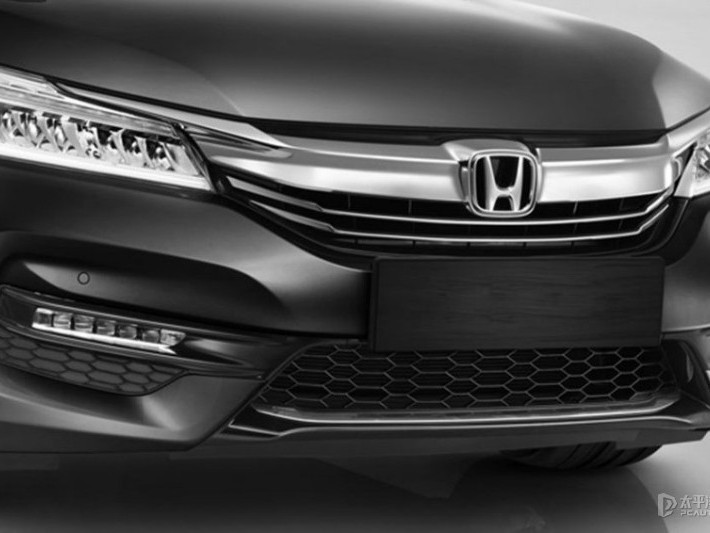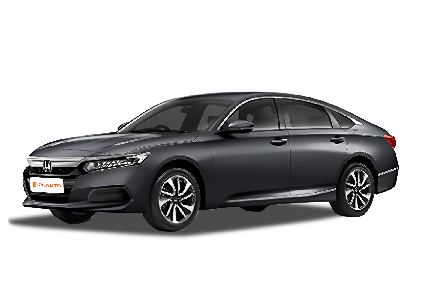Q
why honda accord is discontinued
The main reason behind the discontinuation of the Honda Accord in Malaysia ties back to shifting global automotive trends and evolving local consumer preferences. In recent years, SUVs and crossovers have surged in popularity across Malaysia, leading to a decline in sales for traditional four-door sedans – especially in the fiercely competitive D-segment. Concurrently, Honda Malaysia has opted to redirect resources toward its hotter-selling SUV models like the CR-V and HR-V, along with volume drivers such as the City and Civic that better align with local market demands, streamlining their overall product portfolio. Additionally, with the global auto industry rapidly pivoting toward electrification, Honda is likely channeling R&D focus toward new energy vehicles. For Malaysian buyers, while it's a touch disappointing to see the Accord go, Honda still offers the Civic with its similar engaging driving dynamics, and the local market remains well-served by other solid D-segment options like the Camry and Mazda6. It's important to note that product lineup adjustments are standard business practice for automakers, typically rooted in sales data, market research, and strategic planning. Looking ahead, there's always the possibility Honda could bring back the Accord to Malaysia – potentially as a hybrid or fully electric variant.
Special Disclaimer: This content is published by users and does not represent the views or position of PCauto.
Related Q&A
Q
What is lane assist on Honda Accord 2023?
The Lane Assist system in the 2023 Honda Accord is an advanced driver-assist feature. It uses a camera to track the vehicle's position within the lane and provides gentle steering assistance or vibration alerts if you start to drift unintentionally, helping you stay centered. This is especially handy for Malaysia's highways or long drives, really cutting down on fatigue and boosting safety. It usually pairs with Adaptive Cruise Control (ACC) for a semi-autonomous driving feel, but you still need to keep your hands on the wheel and be ready to take over. Important to note, this isn't full self-driving—its performance depends on things like weather and how clear the lane markings are, so always stay focused. In the Malaysian market, you'll typically find this feature on higher-spec Accord models, working alongside other systems in the Honda Sensing suite like Collision Mitigation Braking System (CMBS) and Road Departure Mitigation (RDM) to give local drivers more comprehensive protection.
Q
Does the 2023 Honda Accord show tire pressure?
The 2023 Honda Accord does come with a Tire Pressure Monitoring System (TPMS) that shows real-time pressure readings for each tire. Drivers can check the specific numbers on the instrument cluster or center display screen. This feature is especially handy in Malaysia's hot climate and for long drives, since high temperatures can cause tire pressure to spike unexpectedly—keeping an eye on it helps prevent blowouts. Plus, the system usually warns you if the pressure gets too low or too high, prompting you to check the tires. For Malaysian users, regular pressure checks don't just boost safety; they also improve fuel efficiency and tire lifespan. It's a good idea to manually check the pressure at least once a month, especially when temperatures swing a lot. Make sure to adjust according to the recommended levels listed in the owner's manual or on the door jamb. If you notice frequent pressure issues, it might mean a leaky tire or a faulty sensor—best to head to an authorized service center to get it checked out.
Q
How do you auto start a Honda Accord 2023?
If the 2023 Honda Accord in the Malaysian market is equipped with remote start, it can be operated via the smart key or mobile app. Here's how: first press the lock button to ensure the doors are locked, then hold down the remote start button on the key (usually a circular arrow icon) for about 2 seconds. Once the engine starts, the air conditioning system will automatically activate to adjust the cabin temperature – super useful in hot weather. It's important to note that the vehicle needs to be in Park (P) and have sufficient fuel for a successful start. Some models may require activating the HondaLink mobile app and subscribing to relevant services first. For models not equipped with this feature as standard, it's recommended to have Honda authorized dealers install original accessories to ensure compatibility and avoid potential electrical risks from self-modification. Remote start technology has now become a common feature in mid-to-high-end models. Besides convenience, it also enhances driving comfort by pre-cooling or pre-heating the cabin. However, owners should be aware of Malaysia's laws regarding idling time; it's generally advised to get in and operate the vehicle within 10 minutes of remote starting, which is both environmentally friendly and compliant with regulations. Different brands implement this feature slightly differently, so it's advisable to read the owner's manual carefully or consult local Honda dealers for accurate information.
Q
How do I turn off traction control on my 2023 Honda Accord?
To turn off the Traction Control system on a 2023 Honda Accord, start the vehicle first. Then, look for the button labeled "VSA" or featuring the traction control icon, usually located on the left side of the steering wheel or on the center console. Press and hold it for about 3 seconds until "Traction Control Off" or a similar message appears on the dashboard. It's important to note that with traction control off, the vehicle may lose some stability on slippery roads or during hard acceleration. So, it's recommended to only turn it off temporarily for specific situations, like getting unstuck from mud or snow—keep it on for regular driving to stay safe. Malaysia's rainy climate means slippery roads are common, and traction control really helps prevent wheel spin and boost driving safety. If you're curious about other driver-assist features, like lane keeping or adaptive cruise control, check the owner's manual or ask a Honda authorized dealer for more details.
Q
Does your 2023 Honda Accord have anti-lock brakes?
The 2023 Honda Accord does come with an Anti-lock Braking System (ABS), which is one of the standard safety features in modern cars. It effectively prevents the wheels from locking up during emergency braking, helping drivers maintain steering control—something that’s especially crucial on Malaysia’s rainy, slippery roads. Beyond ABS, the 2023 Accord also packs Electronic Brakeforce Distribution (EBD) and Brake Assist (BA). These technologies work together to further boost braking performance and overall safety. In Malaysia, a lot of car buyers really care about these active safety features because they can significantly cut down accident risks in unexpected situations. The Honda Accord, being a popular midsize sedan, has always had a pretty comprehensive set of safety gear that meets major global safety standards, making it a solid choice for Malaysian families or business use. For safety-conscious consumers, getting to know a car’s braking system and other safety tech is a must—these features often make a big difference when it matters most.
Q
How to turn off parking sensors on Honda Accord 2023?
To turn off the parking sensors on a 2023 Honda Accord, press the "Parking Sensor" button near the center console (usually marked with a "P" and sound wave icon). The exact location might vary by trim level; some models require using the infotainment system—just go into Vehicle Settings and select "Driver Assist" or "Safety Features" to disable them. It's worth noting that Malaysia's hot and rainy weather can affect sensor sensitivity, so occasional false alerts are normal. We recommend regularly cleaning dirt or water spots off the sensor surfaces to keep them working their best. If you're getting frequent false triggers, reach out to a Honda Malaysia authorized service center. This isn't a malfunction—it's just how electronic systems behave in extreme environments. Other models like the Toyota Camry or Mazda 6 use similar setups, with slight differences in operation but the same basic principle. Temporarily disabling the sensors won't affect other safety features like the rearview camera or blind spot monitoring. The system will usually reset to default "on" when you restart the car, which is good for safety.
Q
How to turn off lane assist on 2023 Honda Accord?
To turn off the Lane Assist on the 2023 Honda Accord, you can use the buttons on the right side of the steering wheel to access the vehicle settings menu. Look for the "Driver Assist Systems" option, then select "Lane Keeping Assist" and switch it off. The exact steps might vary slightly depending on the vehicle's configuration or regional version, so it's best to check the owner's manual or consult a local Honda dealer in Malaysia for precise guidance. Lane Keeping Assist is part of Honda's Honda Sensing safety suite, which uses a camera to monitor lane lines and provides steering correction alerts if the vehicle drifts. It's handy for highways or long drives, but some drivers might prefer to turn it off manually on city roads or in special road conditions. Keep in mind that when you disable it, a notification icon usually appears on the dashboard, and the system might default to being on when you restart the car, so you'll need to repeat the process each time you want it off. In Malaysia, many new cars come with similar driver assist tech—different brands might have different operating logic, but the main goal is all about boosting driving safety. It's recommended that drivers use these features flexibly based on actual road conditions and personal habits.
Q
How do I turn off automatic braking on my 2023 Honda Accord?
To turn off the automatic braking on a 2023 Honda Accord, you can navigate to the vehicle settings menu, find the "Driver Assist Systems" option, then select "Collision Mitigation Braking System (CMBS)" and switch it off. Here's how: After starting the car, use the buttons on the right side of the steering wheel to access the instrument cluster menu. Choose "Vehicle Settings," go into "Safety Support," locate "Collision Mitigation Braking System," and select "Off." It's important to note that automatic braking is a crucial safety feature that effectively reduces collision risks. It's recommended to only turn it off temporarily in special situations and keep it enabled during regular driving for safety. For Malaysian drivers, the local rainy weather and complex traffic conditions make this feature even more vital—it can automatically intervene when the driver doesn't react in time, lowering accidents caused by poor visibility or sudden incidents. If you have questions about other driver assist features like lane keeping or adaptive cruise control, check the owner's manual or consult an authorized Honda dealer. They can provide more detailed operation guidance and technical support.
Q
How to turn on cruise control on Honda Accord 2023?
To activate Adaptive Cruise Control on the 2023 Honda Accord, first make sure the vehicle is started and traveling above 40 km/h. Then press the "MAIN" button on the right side of the steering wheel to power up the system—you’ll see a white cruise icon pop up on the dashboard. When you hit your desired speed, press the "SET/-" button to lock it in; the icon turns green, meaning cruise control is now active. To adjust speed, tap the "+" or "-" buttons for 1 km/h increments, or hold them down for 10 km/h jumps. If you need to pause, just tap the brake pedal or hit "CANCEL"; to resume, press "RES/+" to get back to your set speed.
It’s worth mentioning the 2023 Accord comes standard with Honda Sensing, which includes Lane Keeping Assist (LKAS). Flip that on too, and you’ll get a semi-autonomous driving feel—but keep your hands on the wheel and eyes on the road, okay? Also, Malaysia’s hot and rainy weather can mess with the radar sensor’s sensitivity, so give the sensor area in the front grille a regular wipe-down to keep things working smoothly. This system really takes the edge off on highways or in traffic, but remember: it’s not fully self-driving. You still gotta step in for sudden stuff.
Q
How to turn off idle stop on Honda Accord 2023?
Here's how to turn off the Idle Stop function on the 2023 Honda Accord: After starting the vehicle, look for the button labeled "Idle Stop" (usually with a circular arrow icon) either below the center console or on the left side of the steering wheel. Press it to deactivate the feature, and you'll see the "Idle Stop Off" indicator light up on the dashboard. Just keep in mind that the system defaults to on every time you restart the car, so you'll need to do this each time. The Idle Stop technology is designed to cut fuel consumption and emissions, which is pretty handy for Malaysia's stop-and-go city traffic. But some drivers find the frequent starting and stopping a bit annoying in terms of comfort. If you keep it off long-term, you might notice a slight increase in fuel usage, so it's best to use it flexibly based on the actual traffic conditions. Honda has optimized the Accord's Idle Stop system, so it barely affects engine or starter longevity—no need to worry about durability issues. Plus, in Malaysia's hot weather, the system smartly checks the AC load and prioritizes keeping the cabin cool, so it still stays practical.
Popular Cars
Model Year
Car Compare
Car Photo
Latest Q&A
Q
What exactly is fuel?
Fuel refers to substances that can release their stored energy through chemical reactions (such as combustion) or nuclear reactions. It is widely used in scenarios like power generation, transportation, industrial production, and daily life, providing thermal energy, mechanical energy, or electrical energy support for various equipment and systems. Classified by physical state, fuel can be divided into three categories: solid (e.g., coal, wood, biomass fuel), liquid (e.g., gasoline, diesel, biodiesel), and gas (e.g., natural gas, hydrogen, liquefied petroleum gas); classified by source, it can be divided into fossil fuels (e.g., coal, oil, natural gas) and renewable fuels (e.g., biomass fuel, ethanol, etc.), in addition to nuclear fuels (e.g., uranium, plutonium) that can release nuclear energy. In the automotive field, gasoline and diesel are currently the most commonly used conventional fuels, suitable for spark-ignition and compression-ignition engines respectively; meanwhile, alternative fuels such as compressed natural gas (CNG), liquefied petroleum gas (LPG), biodiesel, and ethanol are gradually being applied in automotive power systems due to their advantages in environmental protection or renewability, to meet different energy needs and environmental requirements.
Q
What is gas vs petrol?
Actually, gas (short for gasoline in American English) and petrol (a term used in British English) essentially refer to the same fuel—gasoline. Both are flammable liquids refined from crude oil and used in spark-ignition internal combustion engines. They share identical core components and functions, differing only in terminology due to regional linguistic conventions.
In the local market, the primary gasoline variants are RON95 and RON97. RON95, being more affordable due to government subsidies, serves as the recommended fuel for most vehicle models (such as the Jaecoo J7 SUV). The 1.6TGDI turbocharged engine equipped in these models is specifically calibrated to leverage RON95's anti-knock properties, delivering 156 horsepower while optimizing fuel efficiency—making it ideal for local hilly terrains and congested urban roads. RON97, with its higher octane rating, offers superior anti-knock performance but at a comparatively elevated cost.
Octane rating serves as the critical metric for evaluating gasoline's anti-knock capability. Vehicle owners should adhere to the engine compression ratio specified in their owner's manual when selecting the appropriate fuel grade, thereby preventing diminished engine performance or accelerated wear. Furthermore, local motorists should prioritize reputable gas stations to mitigate risks posed by substandard gasoline to the fuel system. The use of OEM-recommended fuel additives can also help maintain injector cleanliness, preserving both vehicle performance and longevity.
Q
What are the four types of fuel?
The four common types of fuel include solid fuels, liquid fuels, gaseous fuels, and nuclear fuels. Solid fuels such as coal and coke can release a large amount of thermal energy when burned, and are often used in thermal power generation or industrial heating scenarios; liquid fuels like gasoline and diesel, refined through petroleum processing, are the main power sources for transportation tools such as cars and trucks; gaseous fuels such as natural gas and liquefied petroleum gas (LPG) have a clean and efficient combustion process, and are widely used in household cooking, heating, and industrial production equipment; nuclear fuels like uranium-235 and plutonium-239 release energy through nuclear reactions, which is used in nuclear power generation, featuring high energy density and no direct greenhouse gas emissions. These fuels play key energy supply roles in different fields, meeting the diverse energy needs for power generation, transportation, industrial manufacturing, and daily life.
Q
Is fuel called gas?
In Malaysia, different types of fuels have different names. Gasoline (used in spark-ignition internal combustion engines such as passenger cars and motorcycles) is usually called "petrol" (in English) or "minyak petrol" (in Malay) instead of "gas"; while fuels like liquefied petroleum gas (LPG) are sometimes abbreviated as "gas". Common gasoline variants in Malaysia include RON95 and RON97. Among them, RON95 is more affordable due to government subsidies. In April 2024, the price of RON95 was approximately $0.43 per liter, and RON97 was about $0.73 per liter. Gasoline is produced through the fractional distillation of crude oil, with various additives added to enhance chemical stability, control corrosion, and clean the fuel system. Some gasoline also contains components such as ethanol to improve combustion efficiency.
Q
Is LPG a fuel gas?
Yes, liquefied petroleum gas (LPG) is a type of fuel gas. It is mainly composed of propane and butane, with some products containing small amounts of propylene and butylene. It is derived from the petroleum refining process or volatile gases from natural gas extraction. LPG is a gas at normal temperature and pressure, but can be liquefied into liquid form through pressurization or low-temperature treatment for easy storage and transportation, and is released as a gas when used. It has a wide range of uses, including as fuel for automobiles (especially suitable for light vehicles), domestic cooking fuel, industrial heating fuel, etc., and is also an important petrochemical raw material. Compared with traditional fuels, LPG has advantages such as less pollution (no dust residue after combustion), high calorific value (about twice that of coal per unit weight), convenient transportation, and stable supply pressure. However, due to its flammable nature, strict compliance with safety operation regulations is required during use to avoid safety risks caused by leakage.
View MoreRelated News

Starting from RM 187,400! A Honda Accord with sufficient trunk capacity, would you consider it?
AshleyJul 19, 2024

With a budget of 90k, should I choose the Proton S70 or the Honda City?
JamesDec 23, 2025

Jaecoo J5 is about to launch, following Honda CR-V, Honda HR-V will also be challenged
RobertDec 19, 2025

The brand-new Honda Prelude is being sold at a markup in North America. Is this car really that popular?
Kevin WongDec 17, 2025

Honda and Red Bull's eight-year partnership comes to an end. Honda will start a collaboration with Aston Martin.
JamesDec 10, 2025
View More













 Cars
Cars




Pros
Cons